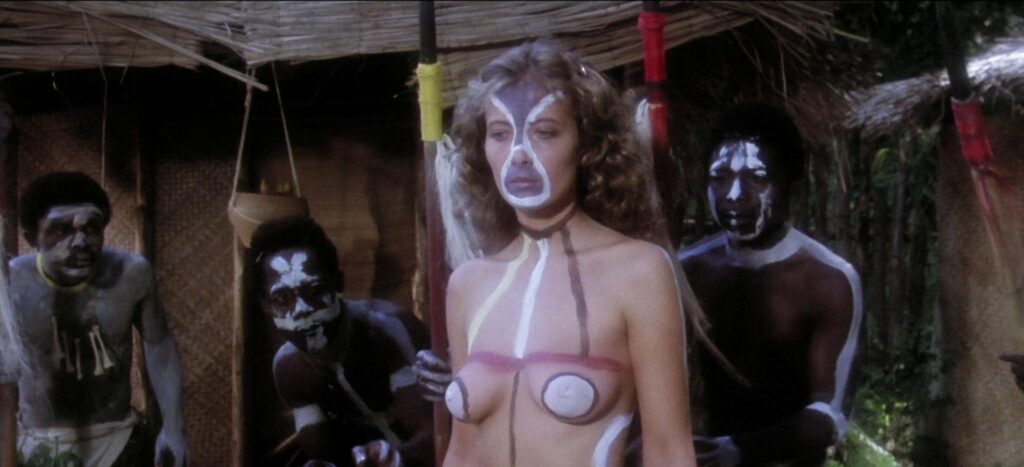
In Papua, New Guinea a series of secret chemical research facilities are covertly experimenting on ways of solving the problem of over population. When there’s an accident at one of these facilities a dangerous toxic gas escapes into the air that re-animates the dead; turns corpses into flesh eating monsters that can only be killed by a shot or severe blow to the head. Lia Rousseau (Margit Evelyn Newton), a reporter and anthropologist, working with indigenous people nearby is quickly on the case. But when Rousseau and her cameraman are forced to team-up with a small group of commandos, led by Lt. Mike London (José Gras), it becomes clear that what they are in for is a fight for survival.
Virus-l’inferno dei morti viventi (1980) has been released under half a dozen titles from Hell Of The Living Dead and Night Of The Zombies to Zombie 4. Director Bruno Mattei (ironically sometimes billed as Vincent Dawn) helmed this Dawn Of The Dead (1978) inspired fusion of the Zombie and Cannibal genes of the Italian exploitation film. Mattei made a career out of specializing in the most extreme genres of the exploitation film market and Virus-l’inferno dei morti viventi is no exception.
Primarily Virus-l’inferno dei morti viventi is a Zombie picture but there is a break after the first act where the film transitions into Mondo territory. Rousseau and the band of commandos happen upon a village of indigenous people, prompting Rousseau to divulge her expertise and experience with the natives. No sooner does this revelation come than Rousseau strips naked, paints her body, and is off to make contact. In quick succession Mattei delivers close-ups of Margit Evelyn Newton’s naked body with cuts to b-roll footage (perhaps even archival footage) of the indigenous people.
Like the stock footage of wild animals that Mattei peppers throughout Virus-l’inferno dei morti viventi, the majority of the footage of indigenous people is taken out of context. These images were chosen for their sensationalist possibilities and represent the most degrading form of exploitation filmmaking. An entire culture is misrepresented and re-branded as a colonialist fantasy. The light, campy tone of the bulk of Virus-l’inferno dei morti viventi that Mattei carefully cultivates may be intended to cast the scenes with indigenous people in a satirically post-colonial light, but that connection never clicks. The issue is that by using stock footage Mattei is drawing the viewer’s attention to the fact that what they are seeing is a reality taken out of its original context and recast as fiction.
Mattei does manage to best Romero on one front though and that’s with comedy. Mattei’s entire approach is pretty campy, but it is in his staging of the zombie attacks that his proclivities for gags is revealed. The gross-out gore and awkward blocking have the cumulative affects of slapstick. The zombies in Virus-l’inferno dei morti viventi are the low-rent cousins of Romero’s walking-dead in Dawn Of The Dead.
Virus-l’inferno dei morti viventi isn’t a film for the squeamish or even the casual fan of horror pictures. The excess of gore, misogyny, racism, and violence that was typical of the seventies and eighties is likely to offend most. Luckily, if Virus-l’inferno dei morti viventi doesn’t suit the mood or sensibilities of the moment, the soundtrack by Goblin will. In many ways Goblin’s music is better on its own that with Mattei’s images of a zombie apocalypse. At times Goblin’s music is atmospheric while at other times it’s almost euro-disco and relatively danceable.
